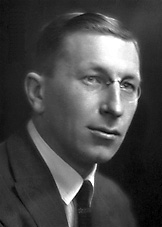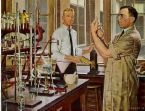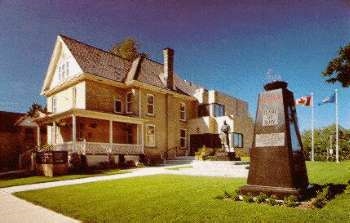 |
| Sir Frederick Banting |
This is a hero story about Canadian medical scientist Sir Frederick Grant Banting, inventor of insulin. Frederick was born in the downstairs bedroom of an old farm house in Alliston, Ontario on November 14th, 1891. He was the youngest of 5 children. He became a Canadian medical scientist, doctor, and Nobel prize winner, as well as one of the top ten Canadians.
Sir Frederick Grant Banting was educated in the public high schools of Aliston, and later studied at the University of Toronto. After university, he studied surgical procedures at London Ontario, which is where he had the idea to invent insulin. He had said the following when he did so: if I hadn't failed in my year at London, I may have never started my research work ... yet it was there that I got an idea that was to change my future. He moved back to Toronto to use the lab at the University to do his experiments with insulin. Frederick Banting got a better understanding of what diabetes was, by taking the organs of one dog, and putting them in another dog with diabetes. He was looking for a way to not sacrifice so many dogs to keep just one diabetic dog alive. He purified his invention, insulin, for human use. The first test on a human was on January 23, 1922, and now millions of diabetics worldwide use it to survive.
 |
| Banting In His Lab |
Approximately 1.5 million Canadians rely on insulin to survive, and 75,000 have diabetes and do not know it. Insulin was a necessary, needed invention for mankind. Insulin was considered one of the best inventions in the history of medicine. There are many medications for diabetes, but insulin is the best. Insulin is not a cure for diabetes, it is a treatment that makes people able to live with it. Today, there are fundraisers for research to find a cure for diabetes.
Frederick Banting had many accomplishments in his life. In 1924 he received the Nobel Prize in medicine, the first Canadian to receive the award. In 1934 he was knighted by King George V and became Sir Frederick Banting. He also was an artist, and he loved to paint pictures of Canadian nature and landscapes.
 |
| Banting Historic Site and Flame of Hope |
Banting died in a plane crash in Newfoundland in 1941. He was on his way to England to continue his wartime medical research. Years after Banting died, there was a historic site and flame of hope placed where he lived in London, Ontario, which is called "the birthplace of insulin." It is only when a cure for diabetes is found that the flame of hope can be extinguished.
Page created on 5/5/2008 12:00:00 AM
Last edited 5/5/2008 12:00:00 AM
